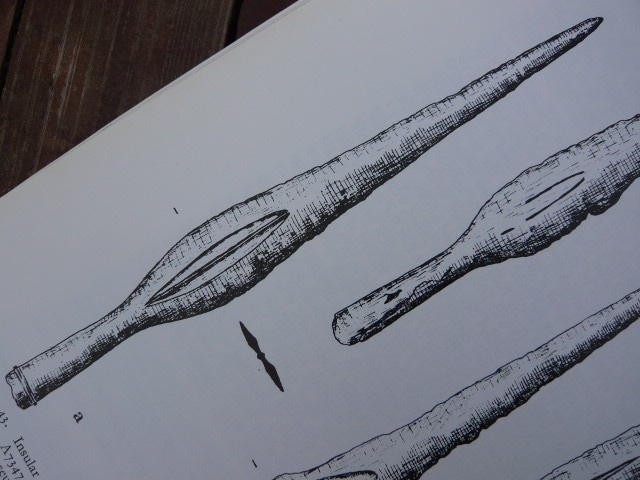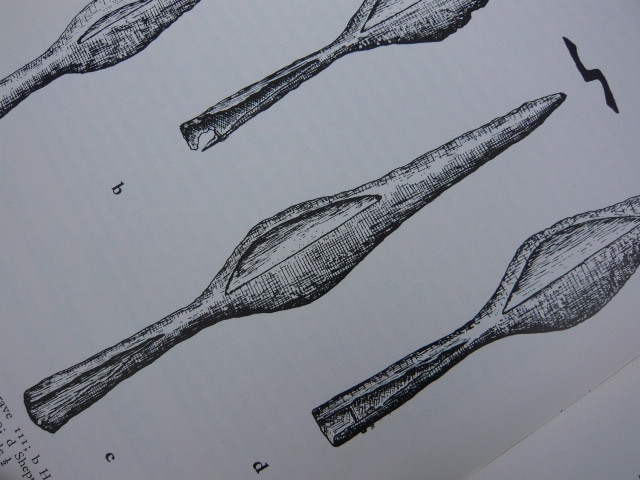In M.J. Swanton’s book “The Spearheads of the Anglo-Saxon Settlements” he shows a corrugated blade on page 116 as a Series I. He attributes it to a characteristic development of certain West Saxon forges. It seems to be a Battersea find from the London Museum A7347. In the description, which I’m not sure of, could the real find be Celtic or based on one of their designs?
In the photos it is labled as "A"
Does anyone know more about this spearhead, especially as to age and which people made it?
There are Anglo Saxon heads like it as the one in photo labled as "C" which he also describes as a find from Droxford, Hants. Does anyone have more information on this one? Especially time frame?
Thanks
Robert

